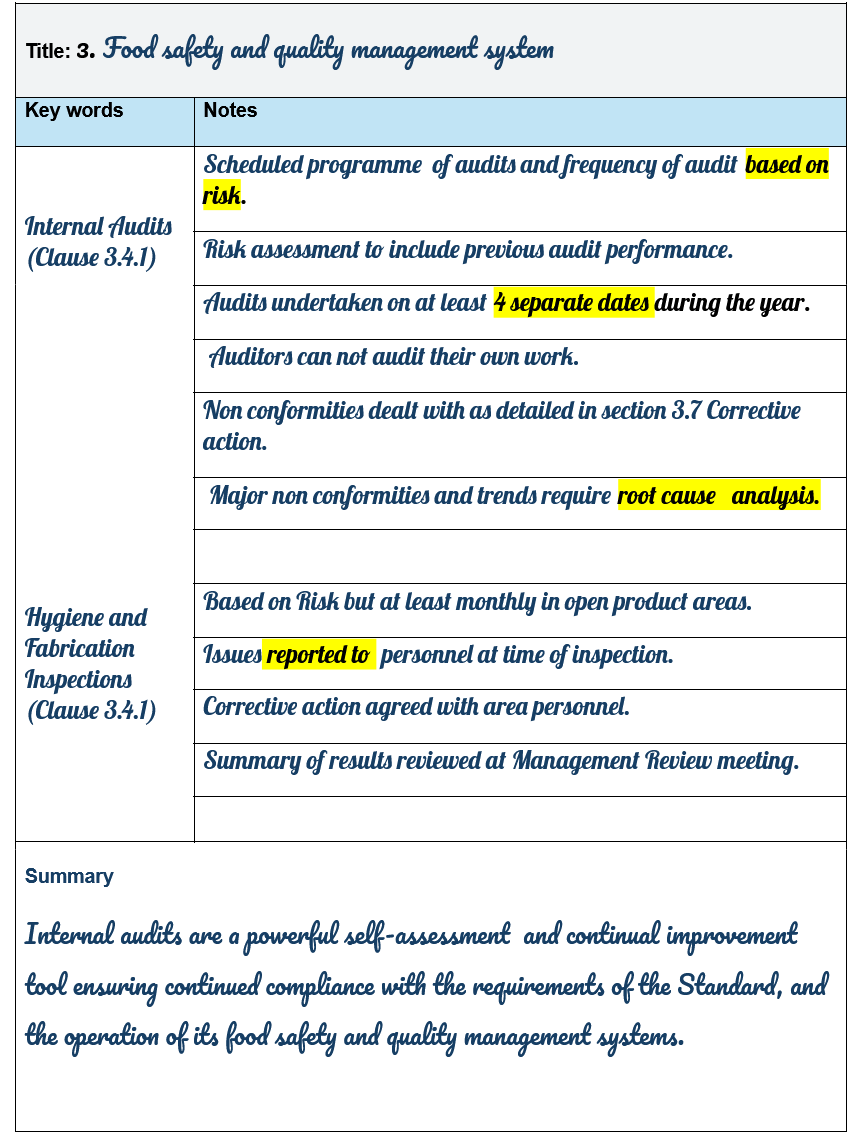
How to prepare for you BRCGS Lead Auditor
course (and reduce exam stress)
You’ve been approached by your manager. He tells you you’re booked on a 5 Day BRCGS Lead Auditor course, starting in a month’s time.
You’ve always wanted to do the BRCGS Lead Auditor Course but it’s been a long time since you completed a high level course and taken an exam.
You also know other people in the company who have taken the exam and not passed at the first attempt. You can already feel the stress building and the course is still a month away.
The first thing to know is that stress is not necessarily a bad thing, as long as you keep it under control. You can use stress to focus your mind on the important things you need to complete before taking the course.
In this blog, I’m going to take you through three steps to prepare and reduce stress in the run up to your course.
Step 1: Initial research
I would always advise you to contact the training company delivering the course and talk to the tutor.
There are two benefits to this:
- You get to know your tutor. In my experience, after an initial discussion with the tutor, most people feel more relaxed about the course.
- Ask the tutor what pre-course materials you should read. The right resources will help you prepare and feel more confident about what to expect.
In terms of reading materials, the obvious one is the BRCGS Global Standard Food Safety. There are also the interpretation guidelines.
The standard is broken down into the following parts
- Part I: Introduction
- Part II: Requirements
- Part III: Audit protocol
- Part IV: Management and governance
- Appendices
Lots of people who work in food manufacturing are familiar with Part II: Requirements. However, as part of your exam, you are just as likely to get asked questions on Part III: Audit protocol.
The Audit protocol provides companies with three audit options with which to be audited and certificated: announced, unannounced and blended.
It describes how these audit processes operate and details the rules and responsibilities for sites, auditors and certification bodies. This is an essential element of the Standard that should be read and fully understood.
Another key area to read up on is Appendix 2: Production risk zones—high risk, high care and ambient high care.
The training company will provide you with a course schedule detailing what topics are going to be covered each day. This will help you focus on topics you’re not familiar with.
The final part of your initial research is to talk to anybody you know who has completed the BRCGS Lead Auditor course. They may be able to pass on some advice or put your mind ease about what to expect during the course and exam.
Step 2: Pre course preparation
Are you a person who prefers working with electronic or hard copy documents?
Prior to the course, you’ll be sent a number of documents via email. If you’re someone who prefers studying from hard copy documents, you’ll need to print off the following documents:
- Current copy of the BRCGS Global Standard Food Safety
- Work booklet
- Case study
You may also want to review other documents and decide if you need to print them off.
You’ll also need a notebook, pens, highlighters and post-it notes.
One of the main issues when taking the exam is having enough time to complete all questions.
Using highlighters and post-it notes allows you to mark and identify key learning points within documents, so you can easily find information during the exam.
The exam is open book: 50 multi choice questions. If your first language is English, you get 75 minutes to answer the questions. If not, you get an additional 25 minutes.
The course runs from 09.00 to 17.30 each day and you’ll need to ensure you have a quiet, comfortable place to work.
I would recommend that you don’t attend from your office desk. If you work in an open office environment, your desk can be a noisy and distracting spot.
As well as the writing and note-taking tools, you’ll also need:
- A stable internet connection
- A quality headset with microphone
- A webcam for the exam invigilation
Please note: you cannot complete the course using a mobile phone.
Step 3: Taking the course
BRCGS provides you with a workbook to make notes on the different exercises you complete on the course.
You also get a copy of the course slides, but only after the tutor has delivered an individual module. Therefore, it’s important to take notes you can use to revise and assist you during the exam.
The notes I recommend comprise of three sections: keywords, notes and summary. There is an example below.
As you go through the course, write down the ideas and key facts you hear in individual lessons. You can use some of the rules below to make it easier to summarise:
- Use a bold title when there is a new topic
- Leave blank spaces to make it easier to read
Taking notes electronically during your course can make it easier to go back through and add additional items. It’s also a good way of revising areas you’ve covered during the day. The notes should be an aid memoirs to remind you of the key information you will need for the exam.
Notes are also an excellent document for revision and a reference point during your exam.
Here’s an example of how to make notes that focus on essential information:

The note format can be easily generated as a word table or in Google Documents.
It’s natural to feel stressed or nervous ahead of starting a big course. Lots of students on the BRCGS Lead Auditor course do. But you don’t have to tackle it alone.
Talk to your tutor and colleagues for any practical help you need. Ask for the relevant resources you need to prepare and get organised early. And remember, we’re here to help you succeed.


